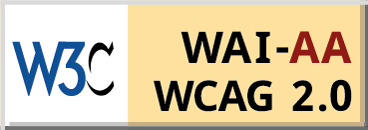India–European Union Defence Cooperation: Avenues for Collaboration
- September 25, 2025 |
- IDSA Comments
The United States’ approach towards the North Atlantic Treaty Organization (NATO) partners and insistence that they need to increase their defence budgets has sparked debates within the EU. While some countries have increased their defence budgets, others in the EU, like Spain, Belgium and Slovakia, have raised objections due to the economic downturn. The EU member states have also discussed re-arming and reforming the European outlook on defence and security. One such step taken was the European ‘Joint White Paper for Defence Readiness’.
Joint White Paper for Defence Readiness
On 19 March 2025, the High Representative for the Foreign Affairs and Security Policy, Kaja Kallas and the European Commission presented a white paper for European Defence—Readiness 2030 and the Re-Arm Europe Plan/Readiness 2030. The primary purpose of the ambitious defence package was to provide financial levers to the EU Member States to drive an investment surge in defence capabilities.[1] The Re-Arm Europe Plan also aims to strengthen pan-European capabilities with new financial means, while framing a new approach to defence and identifying investment needs of various European countries. The document flags the EU’s defence and security partnership with India over the past many years and seeks to strengthen further cooperation in tackling traditional and non-traditional threats.[2]
Current Status of the Indo-EU Defence and Security
In recent months, two major statements have been made about greater cooperation between India and the EU. The first came with the visit of the President of the EU Commission, Ursula Von Der Leyen, to India on 27–28 February 2025. During the visit, Von Der Leyen stated that the EU was committed to exploring a security and defence partnership and expressed satisfaction with the growing cooperation in the defence and security domain.[3] The second was the European Economic and Social Committee, which stressed that India was a ‘perfect ally’. It highlighted the importance of India’s geostrategic position in the Indo-Pacific, a significant geopolitical arena for the EU.[4] It also highlighted the importance of India and nations in the EU, such as France, Germany, Spain and Sweden, developing their defence ties in recent years.
India and the EU have also focused on other avenues of cooperation, such as cyber security, counter terrorism and co-development of technologies. The relations with various EU nations also help enhance India’s relationship with the organisation, with robust ties with France, a major EU nation, Germany and Italy. The relationship is not just limited to these nations. Still, India’s relationship with other nations, such as Romania, Czechia and Poland, also shows New Delhi’s interest in improving its ties with countries across the EU.
New Avenues of Cooperation
While cooperation has been enhanced at the bilateral and organisational levels, there is still room for further enhancement of collaboration with the EU. Firstly, India has seen some successes in the defence export sector. Armenia is a prime example, as it imports defence equipment from India. India and the EU can collaborate to produce jointly, focusing on exporting to the EU as part of their defence cooperation. One such example could be the export of ammunition, which the White Paper mentioned. There is a need to urgently replenish the arms and ammunition within the EU, which could also be provided to Ukraine. India can promote its own ‘Made in India’ ammunition, which has been a success story in its defence manufacturing and exports.[5] Another piece of equipment that India can push for is the Akash missile system, which has seen significant successes in the recent ‘Operation Sindoor’ and hopes to find a market in the EU region.
Second, India can seek to focus on the EU Defence Omnibus Package. The Defence Omnibus Package Initiative lays the groundwork for facilitating up to EUR 800 billion in defence investments over the next four years, enabling Member States and industry to respond swiftly and effectively to growing threats. The Omnibus could provide space for India to collaborate and engage with the EU in cross-certifying defence products and facilitating mutual recognition of certification, where appropriate. This would enable Indian defence products to be validated according to the EU Standards, creating a unified pathway to access the European market.
Third, India and the EU both face the challenges of terrorism, with India having suffered a major terror attack in Pahalgam in Kashmir and the EU being constantly targeted by the Islamic State and also lone wolves’ terror attacks. The two can share intelligence and engage in counter-terrorism drills to improve their capacity to fight terrorism. This can be enhanced by signing a Security of Information Agreement (SoIA) between the EU and India, which could assist in security matters and periodic reciprocal security consultations. India’s interest in joining Permanent Structured Cooperation (PESCO) projects and negotiating the SoIA was welcomed by the EU Commission President von Der Leyen.
Signing a SoIA could help in participation in the EU Defence frameworks, such as the PESCO. The PESCO is a treaty-based framework for the 26 participating Member States to jointly plan, develop, and invest in collaborative capability development and to enhance the operational readiness and contribution of the EU armed forces.[6] These include projects designed to deliver capabilities for the use of Member States, including to support the Common Security and Defence Policy (CSDP) operations and missions, and they provide an opportunity for the participating Member States to cooperate in all domains.[7]
Fourth, India could explore the possibility of engaging with the European Defence Innovation Scheme (EUDIS).[8] The EUDIS is an instrument enabled by the European Defence Fund (EDF) to strengthen defence innovation in the EU. EUDIS offers a set of instruments for small and medium-sized enterprises (SMEs), including start-ups and other non-traditional players in the defence industrial ecosystem, to ensure more opportunities to access the European Defence Fund. It aims to lower entry barriers into the defence domain for smaller players and innovators, focusing on technological readiness and market maturity.[9]
India’s innovation engagement with the EU could replicate its engagement with the US, where initiatives such as INDUS-X seek to build a defence innovation bridge between the two countries under the initiative on Critical and Emerging Technology (iCET). INDUS-X fosters partnerships among defence companies from the US and India, alongside incubators, accelerators, investors and universities, backed by the support of both the US and Indian governments.[10]
Fifth, India has established Defence Corridors in Uttar Pradesh and Tamil Nadu, which could also be important in attracting EU investment. EU countries like France, the United Kingdom and Poland have expressed interest in investing in these corridors. Rolls-Royce intends to expand its operations in Tamil Nadu, with plans for a maintenance, repair and overhaul (MRO) facility, a research and development (R&D) and training centre, along with a significant expansion of its International Aerospace Manufacturing Private Limited (IAMPL) joint venture in Hosur, one of the five nodes of the Tamil Nadu Defence Corridor.[11]
In 2020, Thales partnered with Kanpur-based company MKU to manufacture night vision devices.[12] In 2025, Poland’s most prominent private defence technology firm, WB Group, through its Indian subsidiary WB Electronics India Pvt Ltd, intends to establish a production line of its battle-tested Warmate Tube-Launched (TL) Loitering Munition System in the Uttar Pradesh Defence Industrial Corridor (UPDIC).[13] In future, therefore, defence and security cooperation can become the mainstay of the India–EU relationship.
Views expressed are of the author and do not necessarily reflect the views of the Manohar Parrikar IDSA or of the Government of India.
[1] “Commission Unveils the White Paper for European Defence and the Rearm Europe Plan/Readiness 2030”, European Commission, 19 March 2025.
[2] “White Paper for European Defence – Readiness 2030”, European Commission, 12 March 2025, pp. 18–19.
[3] “Leaders’ Statement: Visit of Ms. Ursula von der Leyen, President of the European Commission and EU College of Commissioners to India (February 27-28, 2025)”, Ministry of External Affairs, Government of India, 28 February 2025.
[4] “EU-India Strategic Partnership, A New Chapter”, European Economic and Social Committee, European Union, 8 April 2025.
[5] Sujan Chinoy, “The EU Joint White Paper for Defence Readiness 2030: Opportunities for India”, Observer Research Foundation, 8 August 2025.
[6] “About PESCO”, Permanent Structured Cooperation (PESCO), 2025.
[7] Ibid.
[8] Sujan Chinoy, “The EU Joint White Paper for Defence Readiness 2030: Opportunities for India”, no. 5.
[9] “EU Defence Innovation Scheme (EUDIS)”, European Union, 2025.
[10] “India-U.S. Defense Acceleration Ecosystem (Indus-X)”, Defence Innovation Unit, Department of Defense, United States of America, June 2023.
[11] Shine Jacob, “Stalin’s UK Visit: TN Bags Investments in Defence, Renewable, Textile”, Business Standard, 3 September 2025.
[12] “French Firm, Kanpur’s MKU to Make Night Vision Devices for Armed Forces: UP Minister”, Hindustan Times, 24 November 2020.
[13] Mayank Singh, “Aero India 2025: Poland’s Battle-Tested Loitering Munition Exhibited For First Time”, The New Indian Express, 15 February 2025.




